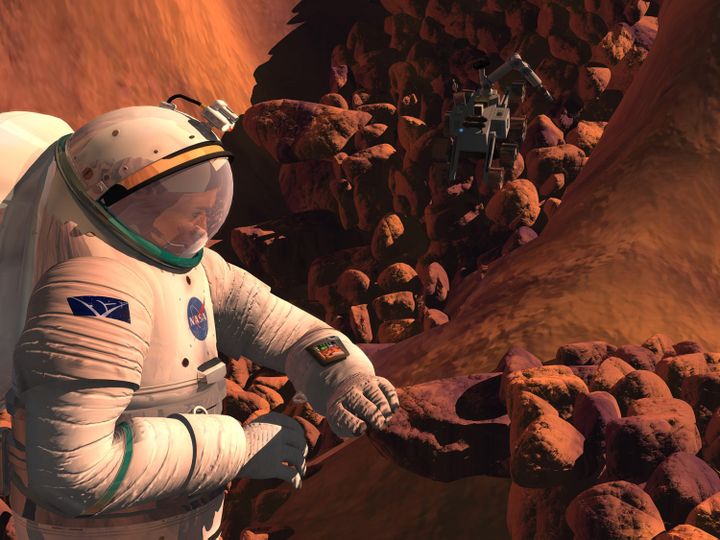
There's been a lot of talk about Mars lately. Scott Kelly, a NASA astronaut, is spending a year in space to provide more information about how the body changes -- information that could prove useful when it will take humans a couple of years to get to Mars and back. Meanwhile, the private group Mars One is selecting astronauts for a possible one-way mission in the 2020s.
But let's face it: while it's technologically possible to send people there today, there's a lot of stuff we need to know to make it safer. What are the radiation risks far away from the shelter of Earth? How will people feel being separated from their loved ones for so long? And perhaps most importantly, what will they eat?
Mars seems to have a little water ice on its surface that (with the right technology) could be extracted for drinking, but looks like the rest of the food will have to be hauled there. It's possible food could be grown (think of the potatoes in The Martian), but there's more research that needs to be done for what humans actually need on the Red Planet.
"In space, the astronauts’ environment also impacts their nutrition needs. Beyond microgravity, higher radiation exposure, higher atmosphere levels of carbon dioxide, temperature and humidity can all have profound effects on health," NASA wrote in a recent release.
"Nutrition is important to help counteract some of the effects spaceflight have on the body, such as bone and muscle loss, cardiovascular degradation, impairment of immune function, neurovestibular changes and vision changes."
And the options demonstrated in analog environments show how hard it could be to live on space food for a couple of years. Think of stuff that is dry and can be eaten that way, or brought alive with water. If you're not careful, that kind of food can get boring. Astronauts on the space station live for those fresh fruit shipments every few weeks.
How much we eat, and what we eat, has so many factors going into it. An astronaut on Mars is likely burning more calories than one floating around a space station -- but he/she may be burning fewer than on Earth if the gravity is lower. How will we find out? Nutrition models and simulations will be our only way to know ahead of time.
Do you have an idea to improve astronaut nutrition in space? Let us know by launching a HeroX challenge.
Top image: Artist's conception of an astronaut working on Mars. Credit: NASA








